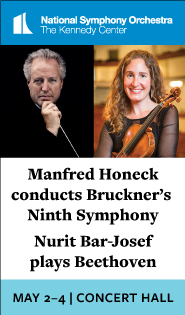Schumann Quartett dazzles in Candlelight Concert program

What is the result when technical mastery is mixed with enthusiasm, genuine communication and deep expression?
The Schumann Quartett embodied all these qualities at their concert Saturday night at the Horowitz Performing Arts Center in Columbia. The event was presented by Candlelight Concert Society.
The German ensemble is named, not after the composer, but its trio of fraternal members: violinists Erik and Ken Schumann and cellist Mark Schumann, with violist Liisa Randalu. The three brothers have been playing together since childhood and it showed Saturday night with the group’s close ensemble in a dynamic, well-rounded program of Mozart, Shostakovich and Smetana.
The program began with Mozart’s Quartet in D Major, K. 499, subtitled “Hoffmeister,” after the friend of Mozart’s who published the work in 1786.
The Schumann Quartett expertly captured the piece’s characteristic light, classical style. The opening Allegretto was well-paced with perfectly timed transitions, particularly noticeable in their clean and resonant cadences. The lower strings drove energy throughout with their steady 16th-note passages, supporting the violins’ melodies and dynamic contrast.
The player brought an almost Romantic-era quality to the ensuing Menuetto emphasizing its energy and strong emotional character and energy. The Adagio would have benefited from slightly more dynamic contrast, but its natural evolution and intimate expression made up the balance. The musicians were at their best in the concluding Allegro, performed with sensitive nuance and joyful energy.
In the Mozart performance and, indeed, throughout, the ensemble’s communication with each other was striking. Each member seemed carefully attuned to one another, responding to the slightest change in dynamic or character. Their body language aligned with each emotional shift in the music; and transitions were perfectly coordinated within the group through their breath, cues and facial expressions. Ken Schumann, second violinist, especially, seemed to often embody the music’s emotional essence visually.
Shostakovich’s Quartet No. 9 in E-flat major, op. 117, followed the Mozart. The work, dedicated to the composer’s third wife Irina Antonova, is written in characteristic dark, foreboding style, and is played without pause.
The first two movements are both deep and dark in tone, featuring striking solos in both the cello and the viola. In the first, cellist Mark Schumann, soared above the ensemble’s accompanying pizzicato, his tone resonant and cutting in a playful, ironic-sounding solo. In the viola solo, Liisa Randalu demonstrated impressive off-string bow strokes, balanced with long, lyrical passages. Both performers captured Shostakovich’s dark and caustic style perfectly, setting a chilling and curious atmosphere in the hall.
The third movement continued with sharp, off-the-string strokes, led by first violinist Erik. While the energy and the emotional character were present, technical clarity needed some work. At times, Erik Schumann’s high emotional intensity disrupted the clarity of the bow stroke, which affected the tone.
The intensity calmed with the fourth movement, which slowed in tempo and in volume, performed con sordini. Erik Schumann’s high soloistic passages here were impressively in tune. The piece concluded with a wild, explosive energy in its Allegro finale, leaving listeners with a sense of not only marching, but galloping, towards a foreboding fate.
After intermission, the Schumann Quartett performed Smetana’s Quartet No. 1 in E minor, “From my Life.” The autobiographical piece “paints a tone picture of my life,” said Smetana. The sustained high E in the finale is particularly striking, as it depicts the whistling in the composer’s ear, which foreshadowed his deafness.
The first movement, Allegro vivo appassionato, opens with a resonant, unified chord, followed by a gripping viola solo over the ensemble’s moving notes. The work is intense with a fiery energy, which Schumann Quartett performed with exciting vivacity. At times the group’s energy disrupted the tone, though, as in the Shostakovich, producing a slightly scratchy sound quality.
The second and third movements saw a similar issue, though in Largo, the piece blooms into a full-bodied, expansive work of emotional expression. This third movement was written for Smetana’s first love, who became his first wife.
In the work’s finale, the ensemble opens with a bright, cheery tone, which quickly dissolves into a melancholy character following the first violin’s high, sustained E. That keening high note was appropriately disruptive, jarring from the piece’s more joyful character. Erik Schumann, first violin, attacked the note quickly and precisely, drawing immediate attention from the audience. His musical communication, as with the rest of the ensemble’s, remained exemplary until the end.
Violinist Kristóf Baráti and pianist Enrico Pace perform works of Brahms, Janáček and Beethoven 7:30 p.m. April 18. candlelightconcerts.org






